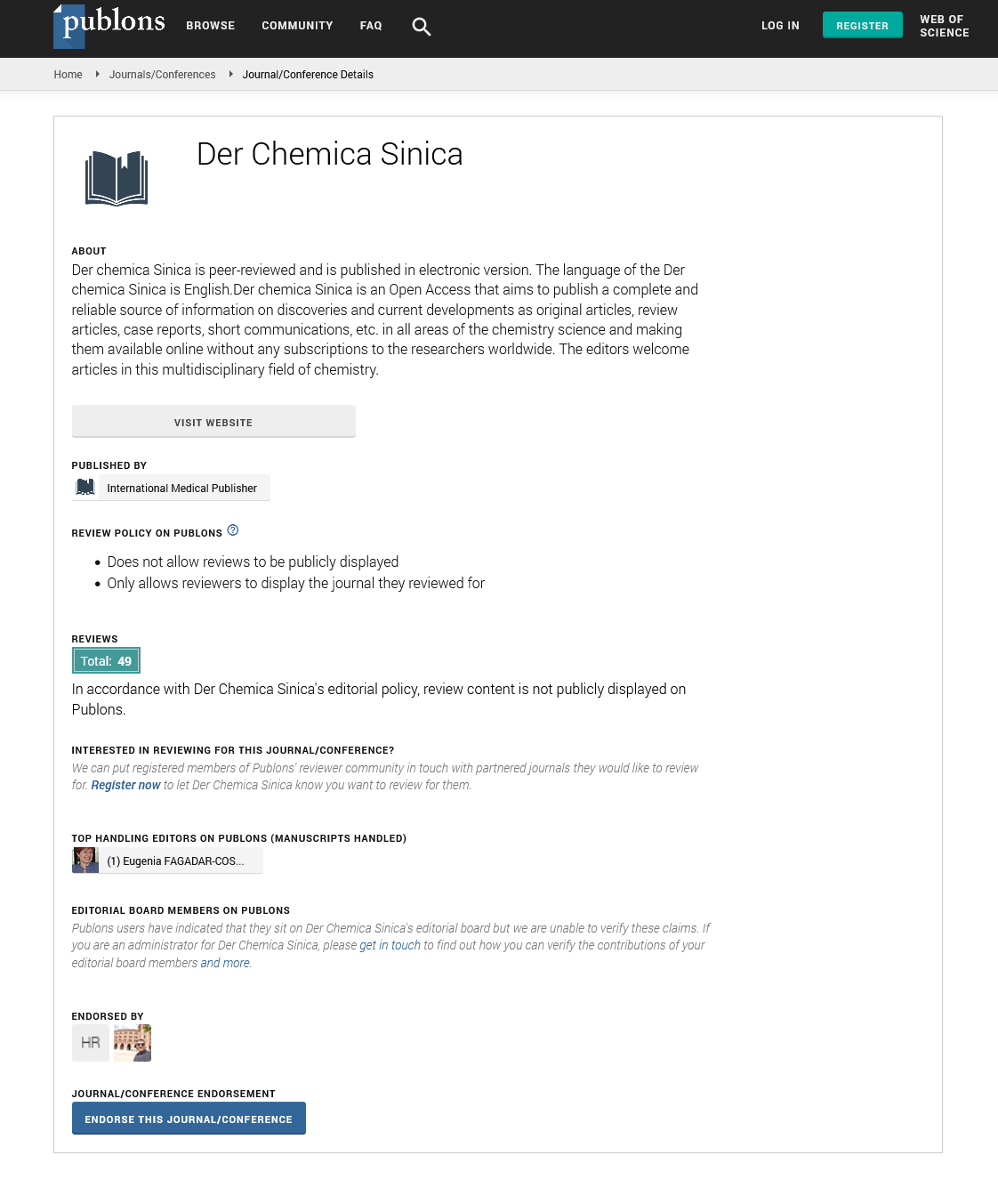ISSN : 0976-8505
Der Chemica Sinica
Abstract
Phytochemical profile and corrosion inhibitive behaviour of Culcasia scandens leaf extract as organic inhibitor of mild steel in Trioxonitrate V acid solution
The effect of Culcasia scandens leaf extract on the corrosion of mild steel in 2 M HNO3 solution was studied using weight loss or gravimetric technique at 303K, 323K and 343K for 30 minutes. The Culcasia scandens leaf extract inhibited the corrosion of mild steel in 2 M HNO3 solution. The inhibition efficiency increased with the concentration of the extract and temperature rise. The inhibition is attributed to the adsorption of the extract on the surface of the mild steel coupon. The corrosion rate, degree of surface coverage θ increased with increase in the inhibitor concentration and temperature. The increase in the degree of surface coverage with rise in temperature suggests that strong chemical bond exist between the extracts and the adsorbent. The highest degree of surface coverage was 0.9729 at 343 K and 350 g/L concentration of the adsorbate. The adsorption characteristics of the Culcasia scandens leaf extract obey Langmuir isotherm. Negative values were obtained for the free energy of adsorption (Go ads) from the isotherm parameters indicating that the inhibition is through spontaneous adsorption of inhibitors onto the metal surface supporting physical adsorption mechanism. The heat of adsorption(Qads) values were all positive implying that the accumulation of the adsorbate on the coupon surface was endothermic. The values of activation energy, Ea ranged from 3.341- 15.71 further supporting physisorption. The preliminary phytochemical screening, FTIR of the Culcasia scandens leaf extract was carried out to determine the phytoconstiuents and the functional groups responsible for the inhibition of mild steel.
Author(s): Ekpeno J. Nkop, Adewoyin M. Ogunmolasuyi, Kelvin O. Osezua and Idorenyin. A. Essien
Abstract | PDF
Share This Article
Google Scholar citation report
Citations : 6019
Der Chemica Sinica received 6019 citations as per Google Scholar report
Der Chemica Sinica peer review process verified at publons
Abstracted/Indexed in
- Google Scholar
- Open J Gate
- Genamics JournalSeek
- China National Knowledge Infrastructure (CNKI)
- Directory of Research Journal Indexing (DRJI)
- Publons
- MIAR
- International Committee of Medical Journal Editors (ICMJE)
- Serials Union Catalogue (SUNCAT)
- Geneva Foundation for Medical Education and Research
- Secret Search Engine Labs
- Euro Pub
- CAS (Chemical Abstracting Services)
- University of Barcelona
Open Access Journals
- Aquaculture & Veterinary Science
- Chemistry & Chemical Sciences
- Clinical Sciences
- Engineering
- General Science
- Genetics & Molecular Biology
- Health Care & Nursing
- Immunology & Microbiology
- Materials Science
- Mathematics & Physics
- Medical Sciences
- Neurology & Psychiatry
- Oncology & Cancer Science
- Pharmaceutical Sciences
